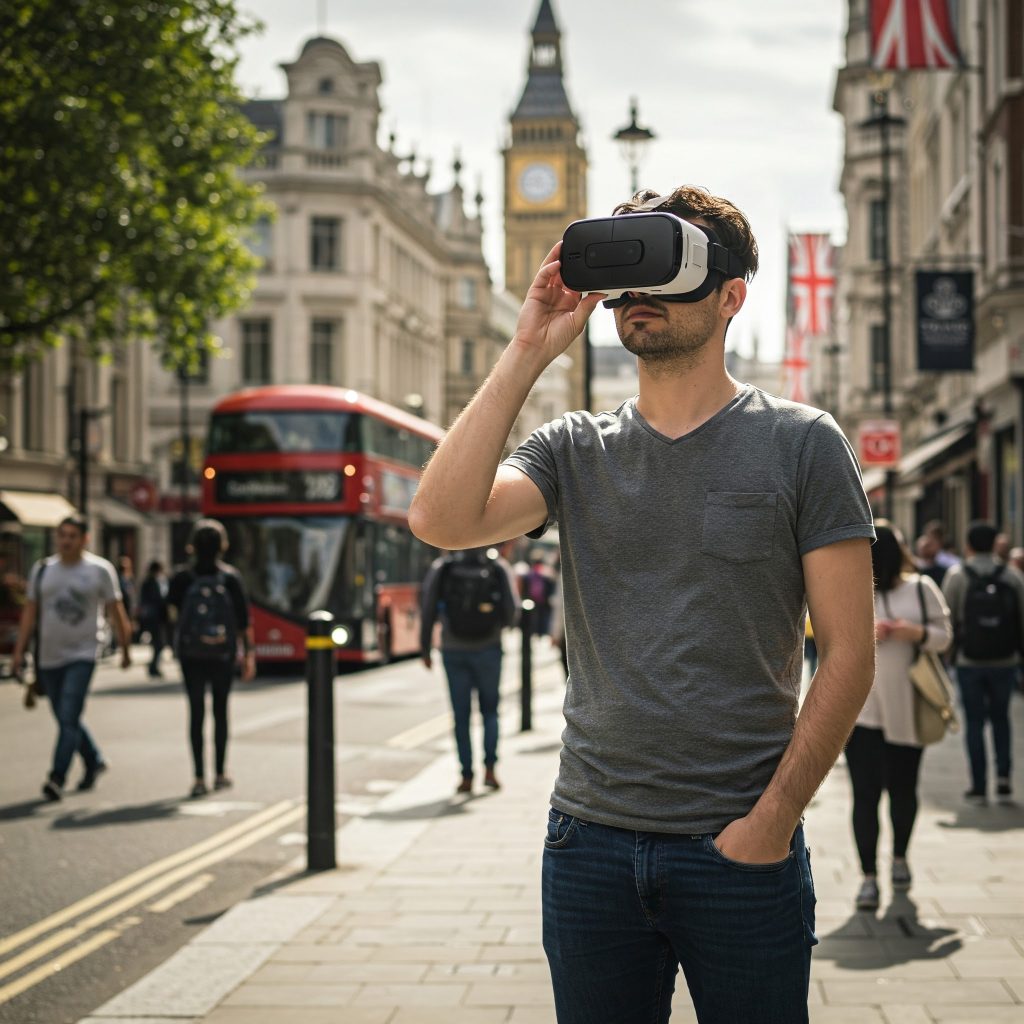
Dreaming of exploring the majestic peaks of the Himalayas, wandering through the bustling souks of Marrakech, or diving into the vibrant coral reefs of the Great Barrier Reef? But the thought of the carbon footprint, the long flights, and the hefty price tag has you feeling grounded? What if I told you there’s a way to travel the world without leaving your living room, and with a minimal impact on the planet? Enter: Google Earth VR and the Meta Quest 3.
As a travel blogger passionate about sustainable exploration, I’m always searching for ways to experience the world responsibly. And while nothing truly replaces the physical experience of being somewhere new, virtual reality offers a surprisingly immersive and eco-friendly alternative.
The Magic of Google Earth VR (and Headset Flexibility)
Imagine slipping on your Meta Quest 3, or another compatible VR headset, and instantly being transported to any corner of the globe. Google Earth VR allows you to fly, walk, and explore in stunning 3D detail. You can soar over mountain ranges, peek into hidden valleys, and even get a street-level view of cities thousands of miles away. While I’ve highlighted the Meta Quest 3 for its comfort and high resolution, Google Earth VR is compatible with a variety of VR headsets, including those from HTC Vive, Valve Index, and others. The experience may vary slightly depending on the headset’s capabilities, but the core functionality remains the same.
VR travel offers accessibility for people with mobility limitations, allowing them to experience places they might never physically reach.
The Sustainable Traveller’s Dream
Let’s talk about the eco-friendly benefits:
- Minimal Carbon Footprint: Traditional travel, especially long-haul flights, contributes significantly to carbon emissions. Using VR, you drastically reduce your environmental impact. The energy consumption of your headset and internet connection pales in comparison to the fuel burned by airplanes.
- No Travel Time: Forget long layovers and jet lag! You can “travel” instantly, maximizing your time and minimizing stress.
- Cost-Effective Exploration: Compared to the expenses of flights, accommodation, and food, a VR headset and internet subscription are a much more affordable way to see the world.
- Accessibility: VR travel offers accessibility for people with mobility limitations, allowing them to experience places they might never physically reach.
- Quick Location Scouting: If you are planning a real trip, you can use Google Earth VR to scout locations, get a feel for the terrain, and plan your itinerary.
The Reality Check: Pros and Cons
While Google Earth VR offers incredible advantages, it’s essential to acknowledge its limitations:
Pros:
- Environmentally friendly.
- Cost-effective.
- Time-saving.
- Accessible.
- Excellent for location scouting.
- Immersive 3D experience.
- The Meta quest 3 offers a high quality visual and comfortable experience.
Cons:
- Lack of Sensory Immersion: You can’t taste the local cuisine, smell the fragrant spices, or feel the warmth of the sun on your skin.
- Missing Human Connection: You won’t interact with locals, learn about their culture firsthand, or forge meaningful connections.
- Limited Physical Interaction: You can’t physically touch or interact with the environment.
- Potential for Motion Sickness: Some users may experience motion sickness in VR, although the Meta Quest 3 has improved tracking to minimize this.
- Reliance on Technology: Requires a VR headset, internet connection, and power.
- It’s not the “real thing”: No matter how good the VR, it will not replace the emotional impact of standing in a location.
A Complementary Approach to Travel
I see Google Earth VR as a valuable tool to complement traditional travel, not replace it entirely. It’s perfect for:
- Pre-trip planning: Getting a sense of a destination before you go.
- Post-trip reminiscing: Reliving your favorite travel memories.
- Virtual exploration: Discovering places you may never have the chance to visit in person.
- Educational purposes: Learning about geography, history, and culture.
Embracing the Future of Sustainable Exploration
As technology advances, VR travel will continue to evolve, offering increasingly realistic and immersive experiences. While it may never fully replicate the magic of physical travel, it provides a compelling and sustainable way to explore our planet. So, grab your Meta Quest 3, or your other compatible headset, dive into Google Earth VR, and embark on a virtual adventure that’s both enriching and eco-conscious.
What are your thoughts on VR travel? Have you tried Google Earth VR? Share your experiences in the comments below!
Leave a Reply